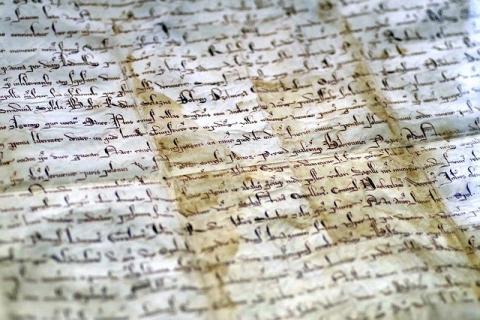Bill Cooper: The Forging of Codex Sinaiticus

I've been lent the above named book by a friend from church. At first, it made me groan as it talked about Jesuit conspiracies which have been in plentiful supply since the Order was founded. It was, however, a good read, if a little technical in places.
The great bibles of the Protestant Reformation are based on the Received Text. The burgeoning Bible Societies in America and Britain were seen as a threat by the nineteenth-century papacy of Clement XVI who sought to undermine their purpose, and Protestantism in general, by 'finding' alternative, different ancient manuscripts. They already had possession of Codex Vaticanus which Cooper says was first catalogued by the Vatican Library in the late fifteenth-century, which is rather odd considering their claim to have possessed it since ancient times. He says it is clearly a late medieval forgery, but that the Pope commissioned a German called Tischendorf to 'find' another- Codex Sinaiticus- which would corroborate Vaticanus and cast doubt on the Received Text. I remember studying his tale as a student. He claimed to have found it at St Catherine's Monastery at Sinai, in a waste paper basket, waiting to be burned. I thought it odd at the time that these monks who had been competent custodians for 1800 years should now be using it as kindling, until this German conveniently arrived and effected a rescue. I was interested to read Cooper's reference to JK Elliott in his assessment of Sinaiticus' authenticity- he was my Head of Department at university.
The Sinaiticus Manuscript was allegedly a copy of a gnostic text made by Constantin Simonides in the 1830s, written on antique vellum as a gift to the Russian Tsar. Simonides wrote to the Guardian newspaper a number of times claiming authorship of the work. The translators of the 1881 Revised Standard Version which was based on the forgery were predictably unimpressed, and Simonides' reputation was done much harm.
In the Shepherd of Hermas and Epistle of Barnabas (non-canonical, gnostic texts, included in Tischendorf's 'find'), there is evidence that the language is inauthentic. Relatively modern Greek words are used and even Latin ones. There's also a lack of oxidisation of the paper; nineteenth century witnesses remarked how white they were. This is rather odd for a seventeen-hundred year old manuscript.
Having read the book, I accept Cooper's chief point: Sinaiticus is a forgery and modern Bible translations based upon it are therefore compromised. Blaming the Catholic Church for this, however, has not in my view been assuredly proved. It's true that the Protestant Tischendorf met the then Pope and that the cost of his travels cannot be easily explained. It is also the case that the Jesuits may have sought to hamper the work of the great Bible Societies, and this discovery helped to achieve this. We also know than the Vatican has a history of forgery, such as the Donation of Constantine. But in 2012, when the daft fragment from 'The Gospel of Jesus' Wife' was published, Cooper attributes this also to the Vatican. Surely the Catholic Church's obsession with virginity would have made this scrap anathema to them?
Secondly, the doubting of Scripture which these erroneous manuscripts wrought inflicted much damage on Protestant churches. Liberalism and modernism spread like wildfire; the churches emptied and secularism soon reigned supreme. The Catholic Church, however, has hardly been a beneficiary of this decline. Although its numbers held until the 1960s, and the average Catholic is unlikely to be troubled by issues raised by the Biblical text, Catholicism's credibility is also tied to scripture. Although I would argue that Rome misinterprets and ignores much within the Bible, any assault upon it would also harm her claims to be the sole interpreter of Biblical truth.
Thirdly, if I were a Roman Catholic forger, I'd first hack away at the books of Romans and Galatians with their proclamations of justification by faith alone. I'd change the bits that mention Jesus' brothers and I'd give a few more of the airwaves to Mary, the co-redemptrex. I wouldn't bother tinkering with the resurrection or the woman caught in adultery.
On a practical note, I would urge all readers beware. The next time your NIV offers an alternative verse as a footnote, claiming that the 'oldest and most reliable manuscripts' don't include it, remember that the oldest and most reliable manuscripts DO include it. I started using the New King James Version five years ago. Cooper's book has turned my preference into an imperative.
- Log in to post comments


 Sunday Worship 10.45am & 6.00pm
Sunday Worship 10.45am & 6.00pm